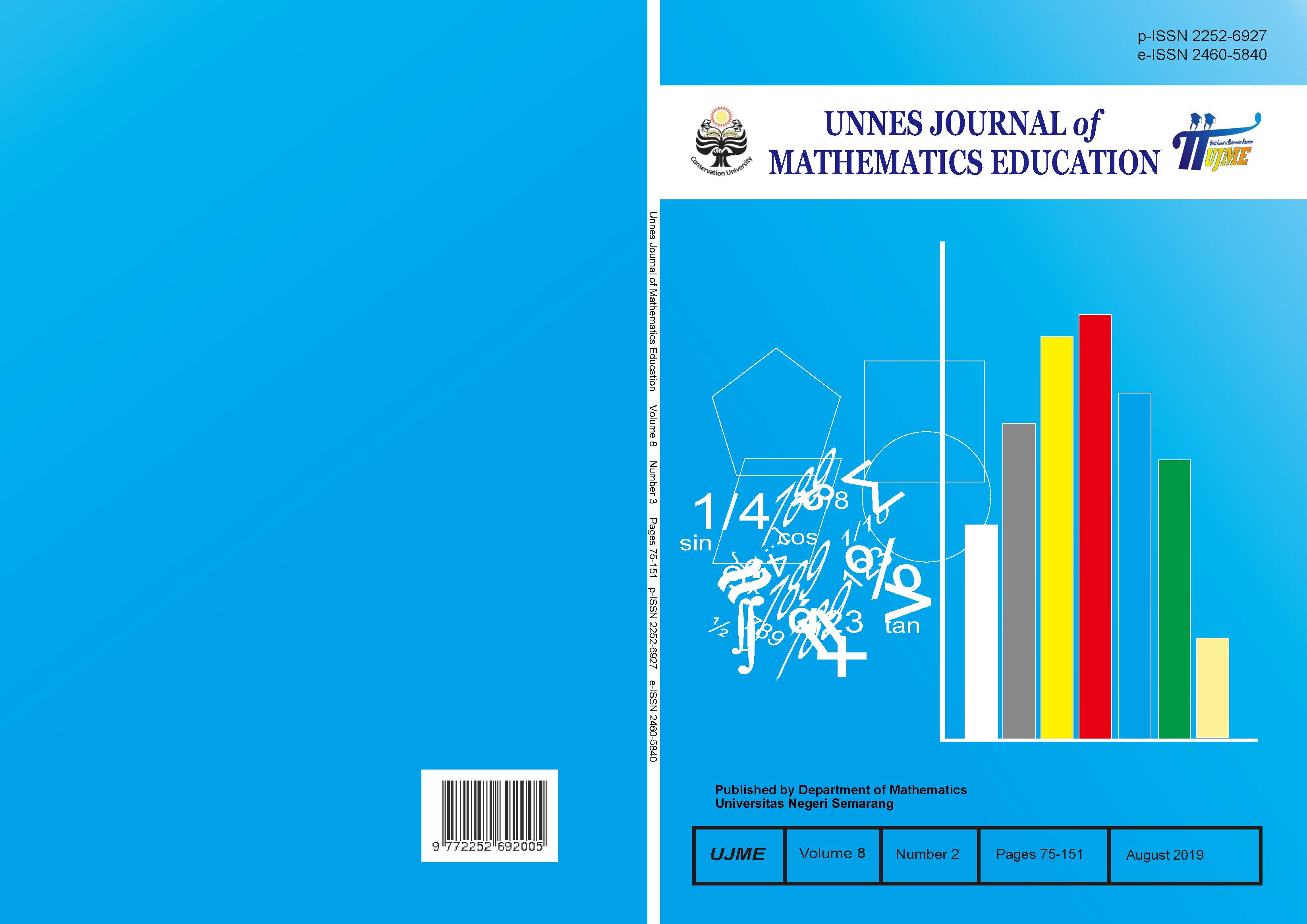Supporting college students’ understanding of integral by using maple-integrated workbook
##plugins.themes.academic_pro.article.main##
Abstract
A factor that contributes to students’ low performance in Calculus is that some teachers and lecturers tend to explain the concept of integral by using a set of symbols, notations, and rules without providing any contexts or representations of the concept. This study was aimed at supporting college students’ understanding of integral by integrating Maple in the learning process using Maple-integrated workbook. This study adapted Brog and Galls’ procedures which consist of collecting preliminary information, planning, developing, validation and preliminary revision, field test, and final revision. The subject of this study was college students’ of Mathematics Education Department of UPS Tegal. The result showed that module developed was in a good criteria, and the conceptual understanding test showed that 82,4% students in the experimental class got a score of 71 or higher. Moreover, the average score of the experiment and control class also confirmed that the average of students’ score in experiment class was significantly higher than that of students in control class.
##plugins.themes.academic_pro.article.details##
References
Drijvers, P. (2002). Learning Mathematics in a Computer Algebra Environment: Obstacles are Opportunities. ZDM The International Journal on Mathematics Education, 34(5), 221–228.
Fuchs, K. J. (2001). Computer Algebra Systems in Mathematics Education. ZDM The International Journal on Mathematics Education, 35(1), 20–23.
Hashemi, N., Abu, M. S., Kashefi, H., & Rahimi, K. (2014). Undergraduate students’ difficulties in conceptual understanding of derivation. Procedia-Social and Behavioral Sciences, 143, 358-366.
Hashemi, N., Abu, M. S., Kashefi, H., Mokhtar, M., & Rahimi, K. (2015). Designing Learning Strategy to Improve Undergraduate Students' Problem Solving in Derivatives and Integrals: A Conceptual Framework. Eurasia Journal of Mathematics, Science & Technology Education, 11(2).
Leng, E. W. (2011). Using An Advanced Graphing Calculator in the Teaching and Learning of Calculus. International Journal of Mathematical Education in Science and Technology, 42, 925-938. doi: 10.1080/0020739X.2011.616914.
Noinang, S., Wiwatanapataphee, B., & Wu, Y. H. (2008). Teaching-Learning tool for integral calculus. Paper presented at the 13th Asian Technology Conference in Mathematics, Suan Sunandha Rajabhat University, Bangkok.
Orhun, N. (2013). Assessing conceptual understanding in mathematics: Using derivative function to solve connected problems. Turkish Online Journal of Distance Education, 14(3), 138-151.
Salleh, T. S. A., & Zakaria, E. (2012). Module for learning integral calculus with Maple: Lecturers' views. TOJET: The Turkish Online Journal of Educational Technology, 11(3).
Yu, C. H. (2013). Evaluating some integrals with Maple. International Journal of Computer Science and Mobile Computing, 2(7), 66-71
Zakaria, E., & Salleh, T. S. (2015). Using technology in learning integral calculus. Mediterranean Journal of Social Sciences, 6(5), 144.
